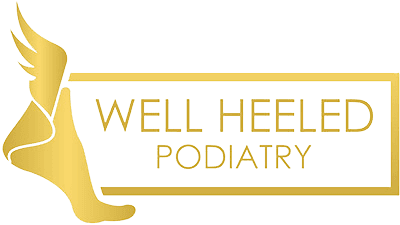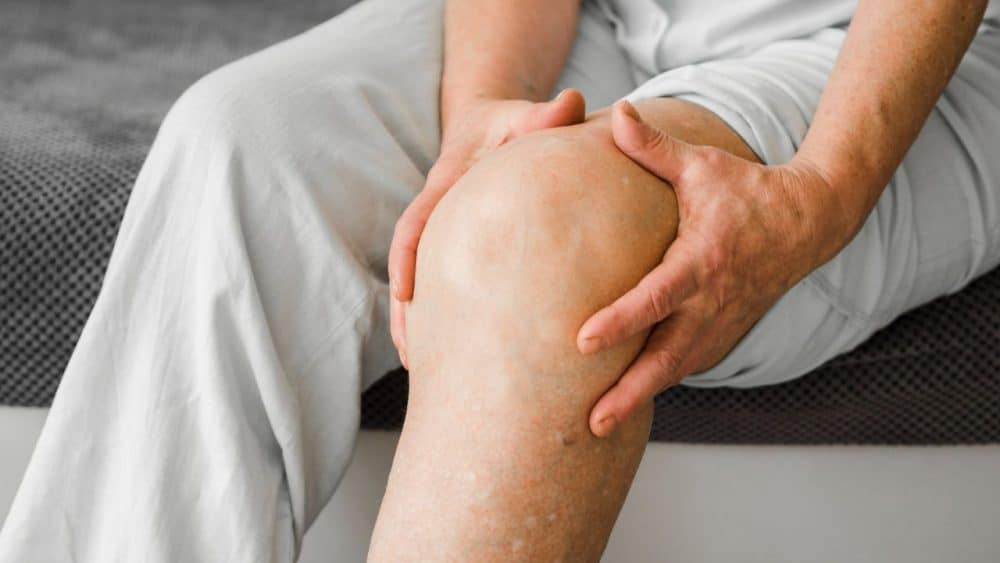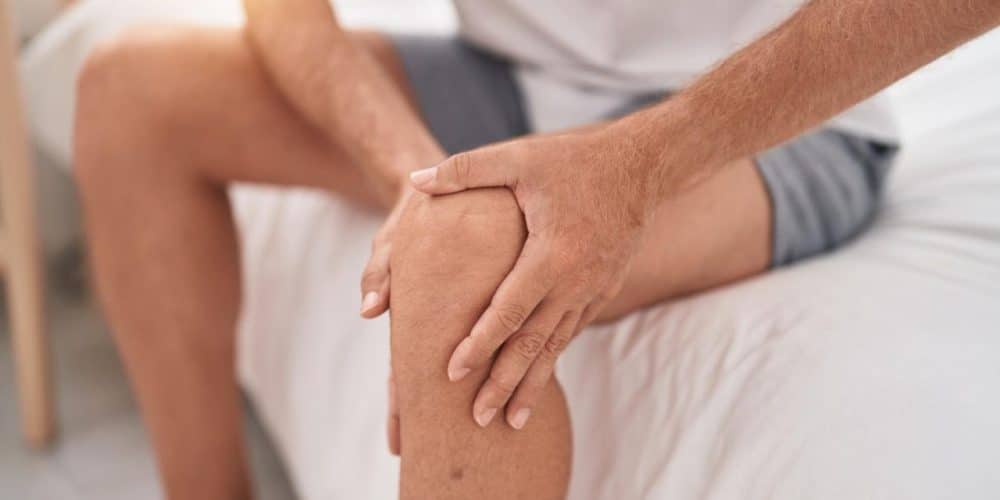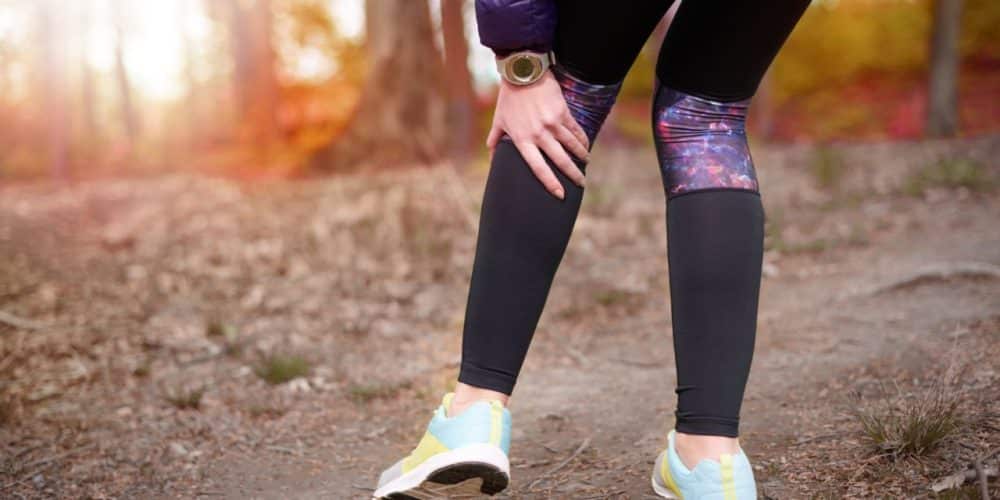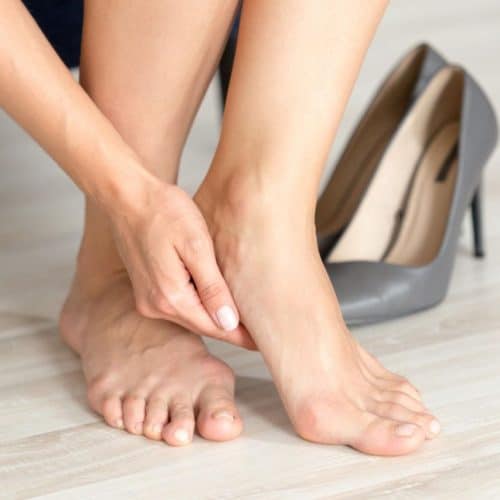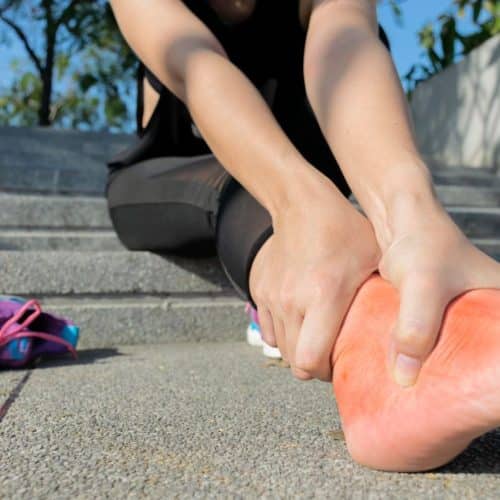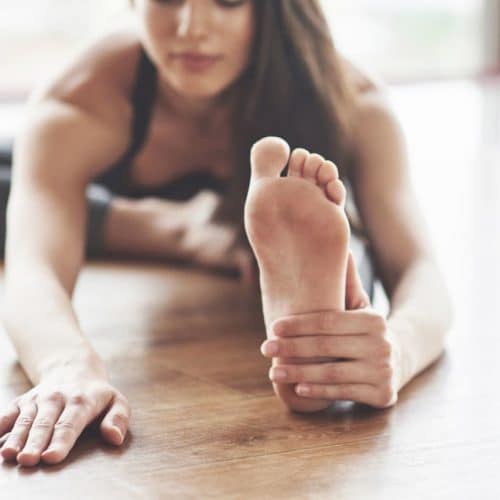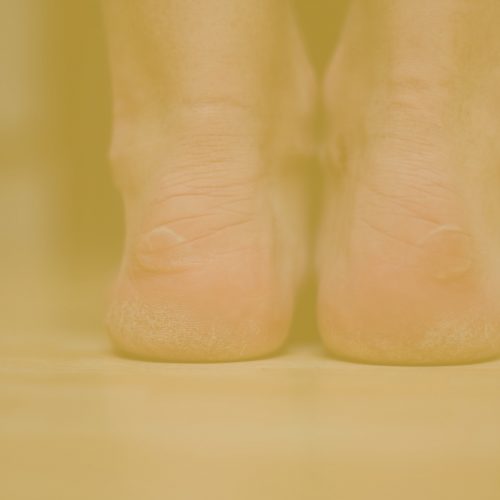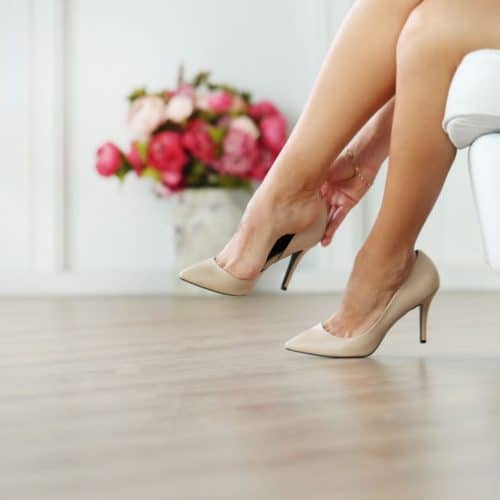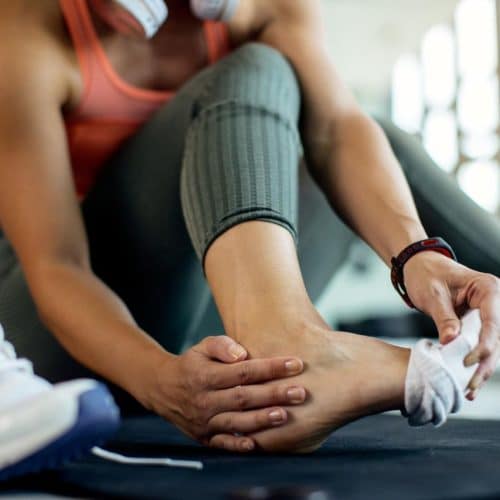Are you tired of dealing with persistent knee pain that hinders your daily activities? What might be causing it, and how can you find relief? This article will explore the common causes of knee pain and present various effective treatment options.
Whether you’re an athlete, a fitness enthusiast, or simply want to stay active and pain-free, understanding the root causes and available treatments is essential for reclaiming your mobility and overall well-being.
Knee pain can stem from various factors such as injury, overuse, arthritis, or misalignment. Accurately identifying the specific cause behind your knee pain is crucial to address this issue. With insights into the underlying causes, you can take informed steps towards finding the most suitable treatment for your condition.
So, let’s dive into the key factors contributing to knee pain and explore the best treatment options.
Remember, your knee health is essential for staying active and enjoying life to the fullest. So, without further delay, let’s unravel the mysteries behind knee pain and empower ourselves with the knowledge to conquer it. Join us as we explore the comprehensive guide to understanding the causes of knee pain and treatment options and take the first step towards a more comfortable and vibrant life.
Understanding Knee Anatomy
The knee joint is a complex structure that plays a vital role in supporting the body’s weight and facilitating movement. A hinge joint allows the lower leg to bend and straighten, making activities like walking, running, and climbing possible. To better comprehend knee pain and its causes, it is essential to understand the various components of the knee anatomy and how they function together.
1. Bones
The knee joint primarily consists of three bones: the femur (thigh bone), the tibia (shin bone), and the patella (kneecap). The femur’s rounded end forms the top part of the knee joint, while the tibia forms the lower part. The patella, a small, triangular bone, is embedded within the quadriceps tendon at the front of the knee. During movement, the patella glides along the groove on the femur, allowing the knee to flex and extend smoothly.
2. Ligaments
There are strong bands made of fibrous tissue called ligaments that link bones to one another in order to give the joint support and stability. There are four primary ligaments in the knee, and they are as follows:
- Anterior Cruciate Ligament (ACL): This ligament runs diagonally through the centre of the knee and prevents the tibia from sliding too far forward in relation to the femur. It also helps in rotational stability, allowing the knee to withstand sudden changes in direction.
- Posterior Cruciate Ligament (PCL): Similar to the ACL, the PCL runs diagonally across the knee joint but prevents the tibia from moving too far backward in relation to the femur. It plays a crucial role in preventing hyperextension of the knee.
- Medial Collateral Ligament (MCL): The MCL runs along the inner side of the knee and provides stability against forces that might push the knee inwards.
- Lateral Collateral Ligament (LCL): The LCL runs along the outer side of the knee and provides stability against forces that might push the knee outwards.
3. Meniscus
The menisci are two C-shaped wedges made of cartilage located between the femur and tibia. These act as shock absorbers, distributing weight and reducing friction during movement. The menisci also play a crucial role in stabilising the knee joint. A tear or injury to the meniscus can lead to pain, swelling, and restricted movement.
4. Cartilage
Articular cartilage lines the ends of the femur, tibia, and patella, providing a smooth and slippery surface that allows the bones to glide effortlessly against each other during movement. This cartilage layer acts as a cushion, reducing friction and preventing bone wear and tear. In conditions like osteoarthritis, the cartilage can degenerate, leading to painful and stiff joints.
5. Muscles and Tendons
Muscles surrounding the knee joint, such as the quadriceps at the front and the hamstrings at the back, are responsible for bending and straightening the knee. These muscles are connected to the bones by tendons, which are strong, flexible cords that transmit the force generated by the muscles to the bones, enabling movement.
6. Synovium
The synovium is a thin membrane that lines the inner surface of the joint capsule and produces synovial fluid. This fluid lubricates the joint, reducing friction during movement and nourishing the cartilage.
7. Bursae
Bursae are small, fluid-filled sacs located around the knee joint. They act as cushions between tendons, ligaments, and bones, reducing friction and allowing smooth movement.
Understanding the intricate anatomy of the knee joint helps comprehend the various causes of knee pain and how they affect its function and structure. With this knowledge, individuals can work with healthcare practitioners to find appropriate treatment options, adopt preventive measures to maintain healthy knees and minimise the risk of knee-related issues.
Common Causes of Knee Pain
Knee pain can arise from various factors, varying from acute injuries to chronic conditions. Understanding the common causes of knee pain can help individuals identify the root of their discomfort and seek appropriate treatment. Below are some of the most prevalent reasons for knee pain:
1. Injuries
- Ligament Tears: Tears in the knee ligaments, particularly the Anterior Cruciate Ligament (ACL) and the Medial Collateral Ligament (MCL) are common sports-related injuries. ACL tears often occur during activities involving sudden stops, direction changes, or jumping, while MCL tears can result from direct blows to the outer knee.
- Meniscus Tears: The meniscus, a cartilage cushion between the femur and tibia, can tear due to twisting or rotating the knee forcefully. This injury is common among athletes and older individuals with degenerating cartilage.
- Fractures: Fractures or broken bones around the knee joint can occur due to traumatic incidents, such as falls or car accidents. Fractures can cause intense pain, swelling, and immobility.
2. Arthritis
- Osteoarthritis: The knee is the most frequent joint in the body to be affected by osteoarthritis, which is a degenerative joint ailment. The cartilage that cushions the bones deteriorates with time, which causes joint discomfort, stiffness, and a reduction in the joint’s ability to move freely. People with a history of joint overuse and older persons are more likely to suffer from this condition.
- Rheumatoid Arthritis: Rheumatoid arthritis is an autoimmune illness that causes inflammation in the knee joint. This inflammation is caused when the immune system of the body assaults the synovium, which is the lining of the joint. This disorder has the potential to cause injury to the joints, as well as discomfort, swelling, and deformity.
3. Overuse and Strain
- Repetitive Activities: Engaging in activities that require repetitive knee movements, such as running, jumping, or cycling, can lead to overuse injuries. Tendons and other knee structures may become inflamed, causing pain and discomfort.
4. Obesity and Excessive Weight
- Excess Weight: Carrying excess body weight stresses the knee joint, especially when walking or climbing stairs. Over time, this can lead to wear and tear on the joint, resulting in pain and reduced mobility.
5. Bursitis
- When the bursae, which are tiny sacs packed with fluid that cushion the knee joint, become inflamed, the result is bursitis. This condition may be brought on by activities requiring the knee to be repeatedly stressed or by injuries to the knee itself.
6. Tendinitis
- Tendinitis is the inflammation of a tendon, the cord-like structure that connects muscles to bones. Overuse or repetitive movements can cause tendinitis in the knee, leading to pain and tenderness.
7. Gout
- Gout is a kind of arthritis that can affect any joint, including the knee and is brought on by a buildup of uric acid crystals in the joint. Attacks of gout are distinguished by sudden and excruciating pain, as well as redness and swelling in the joint that is afflicted.
8. Infection
- Infection: Though rare, infections can occur in the knee joint, leading to pain, swelling, and fever. Infection can be a result of a knee injury or surgery.
Understanding these common causes of knee pain can assist individuals in identifying potential triggers for their discomfort. If knee pain persists or worsens, seeking medical attention is crucial for an accurate diagnosis and appropriate treatment plan. Prompt intervention can help alleviate pain, prevent further damage, and improve knee health and function.
When to Seek Medical Attention
Knowing when to seek medical attention for knee pain is essential to prevent further complications and ensure timely treatment. While some cases of knee discomfort can be managed at home with rest and self-care, certain signs and symptoms warrant immediate medical evaluation. If you experience any of the following, it is recommended to consult a podiatrist:
- Severe Pain: If you are experiencing intense, unbearable pain in your knee, especially after an injury or accident, it’s crucial to seek medical attention promptly. Severe pain may indicate a significant injury or fracture that requires immediate evaluation and treatment.
- Swelling and Redness: Swelling and redness around the knee joint, particularly if they appear suddenly and are accompanied by warmth, may indicate inflammation or infection. These symptoms warrant medical evaluation to identify the underlying cause.
- Inability to Bear Weight: If you cannot put weight on the affected knee or have difficulty walking, it could signify a serious injury, ligament tear, or fracture. Seeking medical attention promptly can prevent further damage and promote proper healing.
- Instability or Giving Way: If your knee feels unstable or gives way when you try to stand or walk, it could be a sign of ligament or meniscus injury. Seeking medical evaluation can help determine the extent of the injury and appropriate treatment.
- Locking or Catching Sensation: If you experience a sensation of the knee “locking” or “catching” during movement, it may indicate a meniscus tear. Prompt medical assessment can aid in proper diagnosis and treatment planning.
- Fever and Chills: If you develop a fever, knee pain, and swelling, it may suggest an infection in the knee joint. Infections can be serious and require immediate medical attention.
- Persistent Pain and Limited Mobility: If your knee pain persists for several days or weeks, and self-care measures do not provide relief, consulting a podiatrist is crucial for an accurate diagnosis and treatment.
- Previous Knee Injuries: It is imperative that you have your knee checked out if you have a history of knee injuries or problems, especially if the pain keeps coming back or gets worse. Previous knee problems might make you more prone to developing new knee troubles in the future.
- Age-Related Knee Pain: For older individuals experiencing knee pain, especially if it interferes with daily activities, seeking medical attention can help manage conditions like osteoarthritis effectively.
- Pain in Both Knees: If you experience pain in both knees simultaneously, it may indicate a systemic condition like rheumatoid arthritis or gout, which requires medical evaluation and management.
Remember that early intervention and appropriate treatment can significantly improve outcomes for knee pain. A podiatrist can perform a thorough evaluation, order diagnostic tests if necessary, and develop a personalised treatment plan to address the underlying cause of your knee discomfort.
Ignoring persistent or severe knee pain can lead to further damage and complications, so don’t hesitate to seek medical attention when needed.
Diagnosis of Knee Pain
Diagnosing the cause of knee pain involves a comprehensive evaluation by a podiatrist. The process typically includes a combination of physical examination, imaging tests, and, in some cases, minimally invasive procedures. Proper diagnosis is crucial for determining the most appropriate treatment plan to alleviate pain and address the underlying condition. Here are the common steps involved in the diagnosis of knee pain:
1. Physical Examination
During the physical examination, the podiatrist will assess the affected knee’s appearance, mobility, and range of motion. They will inquire about the nature of the pain, recent injuries, and activities that exacerbate or alleviate the discomfort. Palpation of the knee area helps identify areas of tenderness, swelling, or abnormal structures.
2. Medical History Review
A detailed medical history review is essential to understand any pre-existing medical conditions, previous knee injuries, surgeries, or chronic joint problems. A family history of arthritis or other knee-related issues may also be relevant to the diagnosis.
3. Imaging Tests
Imaging procedures of all kinds are utilised in order to see the interior components of the knee and locate any abnormalities within. Common imaging methods include:
- X-rays: X-ray images provide a clear view of the bones, allowing the healthcare practitioner to detect fractures, joint alignment issues, and signs of arthritis.
- Magnetic Resonance Imaging (MRI): A magnetic resonance imaging (MRI) scan may produce extremely detailed pictures of the soft tissues, such as the tendons, ligaments, and cartilage. It is useful in determining the presence of tears, inflammation, and degenerative changes.
- Computed Tomography (CT) Scan: CT scans offer cross-sectional images of the knee joint, providing detailed information about the bones and surrounding structures.
4. Arthroscopy
In some cases, the healthcare practitioner may recommend arthroscopy. This is a minimally invasive procedure where a small camera (arthroscope) is inserted into the knee joint through a small incision. Arthroscopy allows direct visualisation of the knee structures and can be used to diagnose and treat certain conditions.
5. Laboratory Tests
In situations when an infection or inflammatory disease is suspected, blood tests may be carried out in order to evaluate inflammation markers or determine the presence of infection.
6. Joint Aspiration
For analysis, joint aspiration, or arthrocentesis, involves removing a small amount of synovial fluid from the knee joint. This procedure can help diagnose joint conditions, such as gout or infection.
7. Diagnostic Injections
In some situations, diagnostic injections may be used to identify the source of knee pain. For example, injecting an anesthetic into a specific knee area can help determine if that area is the source of pain.
By combining information from physical examinations, imaging tests, and other diagnostic procedures, podiatrists can accurately diagnose the cause of knee pain. Once the diagnosis is established, a tailored treatment plan can be developed to address the specific condition and alleviate discomfort effectively.
Early and accurate diagnosis is key to promoting successful outcomes and improving the overall quality of life for individuals experiencing knee pain.
Non-Surgical Treatment Options
Many cases of knee pain can be effectively managed with non-surgical treatment methods. These conservative approaches aim to reduce pain and inflammation and improve knee function without invasive procedures. Depending on the underlying cause of knee pain, podiatrists may recommend one or more of the following non-surgical treatment options:
1. RICE Therapy
Rest, Ice, Compression, and Elevation (RICE) is a simple and effective approach to managing acute knee injuries and reducing inflammation:
- Rest: Avoid putting weight on the affected knee and refrain from activities that exacerbate the pain. Adequate rest allows the knee to heal and prevents further damage.
- Ice: Applying ice packs to the knee for 15-20 minutes several times daily helps reduce swelling and numbs the area, providing pain relief.
- Compression: An elastic bandage or knee brace can provide support and compression to the knee, minimising swelling and promoting healing.
- Elevation: Elevating the affected leg above heart level while resting helps reduce swelling by promoting fluid drainage away from the knee.
2. Physical Therapy
Physical therapy is integral to knee pain management, especially for chronic conditions or post-injury rehabilitation. A licensed physical therapist designs individualised exercise programs to strengthen the knee muscles, improve flexibility, and enhance joint stability. Therapeutic exercises may include:
- Strengthening Exercises: Targeting specific muscle groups around the knee, such as the quadriceps and hamstrings, to provide better support and stability.
- Range of Motion Exercises: These exercises focus on improving the knee’s flexibility and restoring its full range of motion.
- Low-Impact Aerobic Exercises: Activities like stationary cycling or swimming are gentle on the knee joint and help maintain cardiovascular fitness without exacerbating knee pain.
3. Medications
Nonsteroidal anti-inflammatory medicines (NSAIDs) like ibuprofen and naproxen are examples of over-the-counter pain relievers that can help decrease inflammation and discomfort when used as directed.
However, it is vital to use these drugs as advised and to see a healthcare practitioner, particularly if you have any underlying medical issues or if you are taking other prescriptions at the same time.
4. Assistive Devices
Using assistive devices can aid in reducing knee strain during daily activities:
- Knee Brace: A knee brace provides support and stability to the knee, reducing the load on the affected joint.
- Crutches or Canes: In cases of severe knee pain or injury, crutches or a cane can help offload weight from the affected knee during walking.
5. Injections
In some cases, healthcare practitioners may recommend injectable treatments to alleviate knee pain:
- Corticosteroid Injections: Corticosteroids are powerful anti-inflammatory agents that can be injected directly into the knee joint to reduce inflammation and pain.
- Hyaluronic Acid Injections: Hyaluronic acid acts as a lubricant and cushion in the knee joint. Hyaluronic acid injections can help reduce friction and improve knee function in individuals with osteoarthritis.
Non-surgical treatments are often the first line of defence for knee pain and can be highly effective in managing mild to moderate knee issues. However, the treatment choice will depend on the specific diagnosis and the individual’s overall health and lifestyle.
Surgical Treatment Options
If non-surgical therapies do not give adequate comfort or if the underlying condition of the knee calls for more extensive intervention, surgical treatment alternatives may be something to think about. Surgical operations are performed with the goals of treating the underlying cause of knee discomfort, repairing damaged components, and regaining normal joint function.
The severity of the patient’s disease, as well as their general state of health, will determine the particular surgical procedure that is advised. The following are some of the most typical surgical therapy options available for knee pain:
1. Arthroscopic Surgery
Arthroscopic surgery, which is also known as arthroscopy, is a minimally invasive treatment that enables the surgeon to inspect and treat the inside of the knee joint using a tiny camera (arthroscope) and specialist surgical equipment. Arthroscopic surgery is also known as arthroscopic surgery.
This technique involves making small incisions, reducing the risk of complications and promoting faster recovery compared to traditional open surgery. Arthroscopy may be used for various knee conditions, such as:
- Meniscus Repair or Trimming: In the case of a torn meniscus, the surgeon may either repair the tear by stitching the edges together or remove the damaged part (partial meniscectomy).
- Ligament Reconstruction: For severe ligament tears, such as the ACL or PCL, tissue grafts may be reconstructed to restore knee stability.
- Synovectomy: In conditions like rheumatoid arthritis, the synovium may become inflamed and thickened. Arthroscopic synovectomy involves removing the inflamed tissue to reduce pain and inflammation.
2. Partial Knee Replacement (Unicompartmental Knee Replacement)
When the knee discomfort and deterioration are restricted to one particular area of the joint, a partial knee replacement may be a viable option to treat the condition. During this operation, just the damaged portion of the knee joint is replaced with a prosthetic implant.
The remaining portions of the knee, including the bone and the ligaments, are allowed to remain healthy. Individuals who have healthy knee tissue and ligaments that have not been damaged by arthritis or injury and who are candidates for partial knee replacement are ideal candidates for this procedure.
3. Total Knee Replacement (Total Knee Arthroplasty)
The more thorough surgical treatment known as a total knee replacement involves the replacement of the complete knee joint with an artificial device known as a prosthesis. In severe cases of knee arthritis or extensive joint degeneration, this procedure is often recommended as a treatment option.
The knee prosthesis is constructed out of metal and plastic components and is meant to mimic the normal function of the knee. As a result, the joint’s range of motion is enhanced, and the patient has less discomfort.
4. Knee Osteotomy
An osteotomy of the knee is a surgical treatment that realigns the bones that make up the knee joint. Younger patients who suffer from knee arthritis in its early stages or abnormalities that predominantly affect one side of the knee are frequently candidates for this procedure. The surgeon can alleviate the patient’s suffering and slow down the advancement of arthritis by carefully cutting and relocating the bones in the patient’s body so that the weight-bearing burden is transferred away from the affected location.
It is the goal of surgical treatment options for knee pain to give long-lasting pain relief, restore joint function, and increase overall quality of life. The degree of knee injury, the individual’s age, the individual’s activity level, and the individual’s general health will all factor into the decision of which surgical procedure to choose.
Individuals should have an in-depth conversation with their healthcare practitioner about the potential risks, advantages, and outcomes expected from any surgical operation before undergoing any type of surgical surgery. After knee surgery, rehabilitation and physical therapy are essential in assisting patients in making a full recovery, regaining their strength, and regaining mobility in their knee joints.
Preventing Knee Pain
Preventing knee pain is essential for maintaining healthy knees and reducing the risk of injuries and chronic conditions. By adopting certain lifestyle changes and practising preventive measures, individuals can promote knee health and minimise the chances of experiencing knee discomfort. Here are some effective strategies for preventing knee pain:
1. Regular Exercise
Regular exercise is essential for maintaining the strength and flexibility of the muscles that surround and support the knee joint. Walking, swimming, and cycling are all examples of low-impact workouts that provide several health advantages to the cardiovascular system, musculoskeletal system, and knees in particular.
Exercises that strengthen the quadriceps, hamstrings, and calves aid to stabilise the knee and increase joint support. These are the muscles that are targeted in these strengthening exercises.
2. Proper Posture and Body Mechanics
Maintaining good posture and proper body mechanics can significantly reduce knee stress during daily activities. When lifting heavy objects, using the legs and not the back is essential to avoid undue pressure on the knee joint. Additionally, keeping the knees aligned with the hips and ankles while standing and walking promotes joint function and reduces strain.
3. Weight Management
Maintaining a healthy weight is crucial for knee health, as excess body weight puts added pressure on the knee joints. Being overweight or obese increases the risk of developing knee osteoarthritis and can exacerbate existing knee pain. A balanced diet and regular exercise can help achieve and maintain a healthy weight, reducing the load on the knees.
4. Wearing Proper Footwear
Using supportive and well-fitted footwear is essential for promoting proper knee alignment and reducing knee stress during walking and other activities. Choose shoes with cushioned soles and good arch support to absorb shock and provide adequate stability.
5. Warm-up and Stretching
Before engaging in physical activities or exercise, it is essential to warm up the muscles and perform stretching exercises. A proper warm-up increases blood flow to the muscles, making them more pliable and reducing the risk of injury. Stretching helps improve flexibility and range of motion in the knee joint.
6. Avoid Overexertion
Avoid overexerting the knees during activities that involve repetitive movements or intense impact, especially if you are new to the activity or have pre-existing knee conditions. Gradually increase the intensity and duration of exercises to allow the knee joints to adapt and strengthen.
7. Proper Foot Placement during Exercises
Pay attention to proper foot placement during squats and lunges to prevent excessive knee stress. Keep the knees aligned with the toes and avoid allowing the knees to collapse inward, leading to strain on the joint.
8. Wear Protective Gear
If you participate in sports or activities with a risk of a knee injury, such as skiing or basketball, wear appropriate protective gear like knee pads or braces to reduce the impact on the knees and prevent injuries.
9. Listen to Your Body
Pay attention to any signs of discomfort or knee pain during physical activities. If you experience knee pain, stop the activity and allow the knees to rest and recover. A podiatrist should evaluate persistent or worsening pain.
By incorporating these preventive measures into daily life, individuals can take proactive steps to maintain healthy knees and reduce the risk of knee pain and related conditions. However, if knee pain or discomfort persists or becomes severe, it is crucial to consult a podiatrist for a proper evaluation and personalised treatment plan.
Conclusion
In conclusion, understanding the causes of knee pain and the available treatment options is crucial for individuals seeking relief and improved quality of life. Knee pain is a prevalent issue that affects people of all ages and can be caused by various factors. By addressing the root causes and seeking appropriate treatment, individuals can regain mobility and lead pain-free life.
What lifestyle changes will you implement to prevent knee pain and maintain healthy knees in the long run?
As we’ve explored in this blog, knee pain can be attributed to several reasons, including injuries, osteoarthritis, overuse, and other underlying medical conditions. Some common treatment options include physical therapy, medications, lifestyle modifications, and in severe cases, surgical intervention.
It’s essential to consult with a qualified podiatrist to determine the exact cause of your knee pain and devise a personalised treatment plan. Remember, early diagnosis and intervention can be pivotal in preventing further damage and managing the pain effectively.
Content Summary
- Knee pain can stem from various factors such as injury, overuse, arthritis, or misalignment.
- Accurately identifying the specific cause behind your knee pain is crucial to address this issue.
- To better comprehend knee pain and its causes, it is essential to understand the various components of the knee anatomy and how they function together.
- The menisci also play a crucial role in stabilising the knee joint.
- A tear or injury to the meniscus can lead to pain, swelling, and restricted movement.
- Understanding the intricate anatomy of the knee joint helps comprehend the various causes of knee pain and how they affect its function and structure.
- Knee pain can arise from various factors, varying from acute injuries to chronic conditions.
- Understanding the common causes of knee pain can help individuals identify the root of their discomfort and seek appropriate treatment.
- Attacks of gout are distinguished by sudden and excruciating pain, as well as redness and swelling in the joint that is afflicted.
- Understanding these common causes of knee pain can assist individuals in identifying potential triggers for their discomfort.
- If knee pain persists or worsens, seeking medical attention is crucial for an accurate diagnosis and appropriate treatment plan.
- Knowing when to seek medical attention for knee pain is essential to prevent further complications and ensure timely treatment.
- Seeking medical evaluation can help determine the extent of the injury and appropriate treatment.
- You must have your knee checked out if you have a history of knee injuries or problems, especially if the pain keeps coming back or worsens.
- Remember that early intervention and appropriate treatment can significantly improve outcomes for knee pain.
- Diagnosing the cause of knee pain involves a comprehensive evaluation by a podiatrist.
- During the physical examination, the podiatrist will assess the affected knee’s appearance, mobility, and range of motion.
- A detailed medical history review is essential to understand any pre-existing medical conditions, previous knee injuries, surgeries, or chronic joint problems.
- Many cases of knee pain can be effectively managed with non-surgical treatment methods.
- Physical therapy is integral to knee pain management, especially for chronic conditions or post-injury rehabilitation.
- Corticosteroids are powerful anti-inflammatory agents that can be injected directly into the knee joint to reduce inflammation and pain.
- Non-surgical treatments are often the first line of defence for knee pain and can be highly effective in managing mild to moderate knee issues.
- If non-surgical therapies do not give adequate comfort or if the underlying condition of the knee calls for more extensive intervention, surgical treatment alternatives may be something to think about.
- Arthroscopic surgery is also known as arthroscopic surgery.
- Individuals who have healthy knee tissue and ligaments that have not been damaged by arthritis or injury and who are candidates for partial knee replacement are ideal candidates for this procedure.
- The more thorough surgical treatment known as a total knee replacement involves the replacement of the complete knee joint with an artificial device known as a prosthesis.
- An osteotomy of the knee is a surgical treatment that realigns the bones that make up the knee joint.
- The goal of surgical treatment options for knee pain is to give long-lasting pain relief, restore joint function, and increase overall quality of life.
- Regular exercise is essential for maintaining the strength and flexibility of the muscles that surround and support the knee joint.
- Maintaining good posture and proper body mechanics can significantly reduce knee stress during daily activities.
- A balanced diet and regular exercise can help achieve and maintain a healthy weight, reducing the load on the knees.
- Before engaging in physical activities or exercise, it is essential to warm up the muscles and perform stretching exercises.
- If you participate in sports or activities with a risk of a knee injury, such as skiing or basketball, wear appropriate protective gear like knee pads or braces to reduce the impact on the knees and prevent injuries.
- Pay attention to any signs of discomfort or knee pain during physical activities.
- In conclusion, understanding the causes of knee pain and the available treatment options is crucial for individuals seeking relief and improved quality of life.
- By addressing the root causes and seeking appropriate treatment, individuals can regain mobility and lead pain-free life.
- It’s essential to consult with a qualified podiatrist to determine the exact cause of your knee pain and devise a personalised treatment plan.
FAQs
1. What are the common causes of knee pain?
Knee pain can result from injuries, arthritis, overuse, obesity, and various medical conditions.
2. Can knee pain be a result of overuse?
Yes, repetitive activities and excessive strain on the knee joint can lead to overuse injuries and pain.
3. How is knee pain diagnosed?
Knee pain is diagnosed through physical examinations, imaging tests, and, in some cases, arthroscopy and laboratory tests.
4. Are there non-surgical treatment options for knee pain?
Non-surgical options include RICE therapy, physical therapy, medications, assistive devices, and injections.
5. When should I consider knee replacement surgery?
Knee replacement surgery may be considered in severe knee pain and damage cases when non-surgical treatments are no longer effective.

